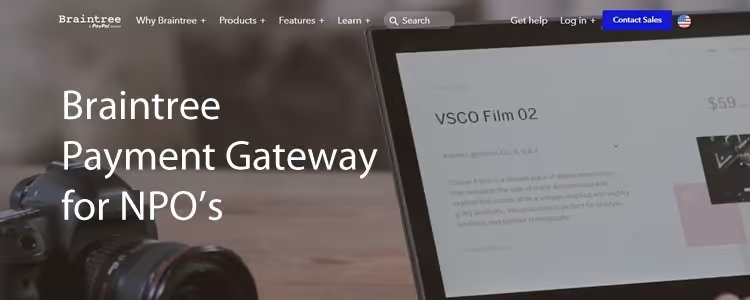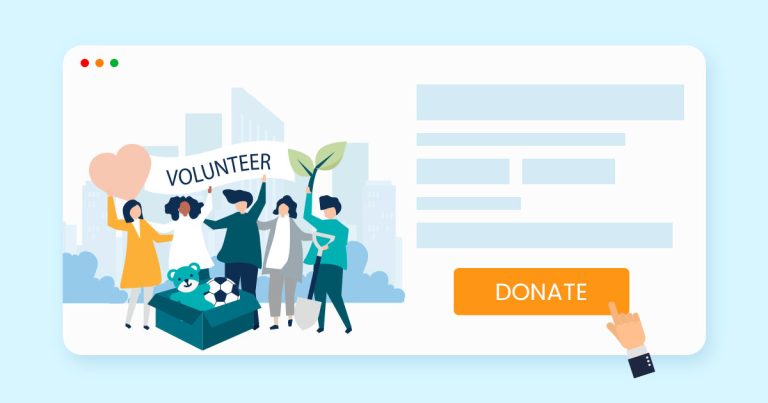As nonprofits look to grow their donor base, crafting the right message and approach is the key to building lasting relationships and securing the support needed to fuel their mission.

In fact, charitable donations are expected to rise by 4.2% in 2024, making it the perfect time for nonprofits to refine their strategies and build momentum.1
But asking for donations isn’t always easy. With so many causes out there, standing out takes more than just a simple request—it requires the right approach. This article will provide you with strategies to help nonprofits ask for donations effectively.
1. Identify Your Donors

The first step to successful fundraising is knowing your audience. Different donors require different approaches. Here’s a guide you can follow:
| Donor Type | Who They Are | How To Approach Them |
| Individuals | – Largest contributors to nonprofit funding- Make donations through various channels | – Diversify channels: online donations, direct mail, crowdfunding, events, and peer-to-peer campaigns.- Personalize outreach to build trust. |
| Businesses | – Support nonprofits through CSR (Corporate Social Responsibility) initiatives- Offer cash, products, services, or employee support | – Apply for corporate grants.- Leverage matching gift programs (discussed below).- Request in-kind donations.- Tap into volunteer grant opportunities. |
| Foundations | – Provide significant funding- Often focus on local or mission-aligned initiatives | – Apply for program-specific or challenge grants.- Research local foundations supporting nonprofits in your area. |
2. Create Messages That Inspire Action

Your fundraising campaign’s success hinges on crafting messages that resonate with your audience. While your approach may vary depending on the channel—email, social media, direct mail, or in-person appeals—some principles remain universal. Here are some guidelines:
Be Clear and Specific
Clearly explain why you’re asking for donations, what the funds will support, and the tangible impact they’ll have.
Example:
Instead of saying, “Support our mission,” try:
“Your $50 donation will provide meals for five families this week, helping them stay nourished during a difficult time.”
Use “You” Language
Center your messaging around the donor, emphasizing their role as a hero in your story.
Example:
Instead of saying, “We are fighting hunger,” try:
“You can end hunger for children in need. With your gift, you’ll ensure they have food to eat and a chance to thrive.”
Tell a Story
Stories are powerful. Share personal, relatable anecdotes that illustrate the impact of donations.
Example:
“Last year, your donations helped a single mother, Sarah, get back on her feet after losing her job. Thanks to your generosity, she was able to keep her family housed and fed while she worked hard to find new employment. Now, Sarah is thriving and working toward a brighter future.”
Use Verbal Appeals
Verbal requests, such as “Please give,” are proven to increase both donor participation and donation amounts compared to non-verbal solicitations. While they may face higher avoidance rates, they’re worth incorporating into your strategy, especially during in-person or video appeals.3
Example:
“Please give today to help us provide life-saving medical care to children who need it most. Your donation will make a difference.”
Match The Tone And Evidence To Your Audience
- Use positive messaging with personal stories to inspire hope and connection.
Example:
“Thanks to your generosity, we’ve been able to help over 500 families rebuild their homes after last year’s devastating flood. Together, we’ve made a real impact!”
- Pair statistical evidence with a negative frame to emphasize the seriousness of an issue.4
Example:
“Over 1 million children are at risk of hunger in our region. Your donation of just $25 can provide food for 100 children, helping us fight this crisis.”
These are general principles. Your approach will depend on your chosen channel and audience.
3. Choose the Right Channels

Selecting the right channels to ask for donations is crucial to reaching your audience effectively. Each platform has unique strengths, so a multi-channel approach can help resonate your message with diverse donor groups. Take a look at these tips:
| Channel | Best For | Tips for Implementation |
| Online Donations | Reaching tech-savvy and mobile donors | – Create a mobile-friendly, user-friendly donation page.- Add a prominent “Donate Now” button on your website.- Include links in all donor communications. |
| Email Appeals | Personal engagement with existing donors | – Write engaging, personalized messages.- Include a clear call to action that redirects to your donation page. |
| Social Media | Engaging a broad audience and younger donors | – Share compelling stories, images, and videos.- Use platform-specific tools like donation stickers and fundraising buttons. |
| Direct Mail | Long-term supporters and major donors | – Send physical letters with a personal touch.- Include reply envelopes or QR codes to simplify giving. |
| In-Person Meetings | Major gifts and corporate partnerships | – Use face-to-face meetings for high-value donors.- Prepare tailored proposals and adjust them based on donor feedback. |
| Phone Calls | Personalized connection during phonathons | – Highlight the donor’s importance and impact.- Use a warm, conversational tone to build rapport. |
Take Advantage of Matching Gifts
Matching gifts are donations that a company makes to match the donations of its employees. For example, if you donate $100 to a nonprofit, your employer might also donate $100, effectively doubling your impact. Some companies offer matching gift programs to encourage employees to give to causes they care about.
Why They Work: Matching gifts can boost donor participation because they create a sense of social proof—people are more likely to donate if they see others doing the same or if they know their donation will have double the impact. Additionally, when people see that their donation is being matched, they feel less responsible for the total amount and might be more likely to participate.5
4. Know When To Ask For Donations
Knowing the right moments to ask for donations can significantly improve your results. Here are some strategic times to consider:
End-of-Year Giving
A large portion of charitable donations happen at the end of the year, with nearly a third of annual donations made in December. This makes the holiday season an important time for nonprofits to ramp up their efforts. Donors are often more generous during this period, influenced by tax incentives and the holiday spirit.
Giving Tuesday
Giving Tuesday, the Tuesday after Thanksgiving, is part of a global generosity movement. This day has become one of the most effective times for nonprofits to boost donations. Take advantage of the global excitement surrounding this event to drive more contributions and attract new supporters.
During Milestones or Crises
Major milestones, such as anniversaries, the launch of new initiatives, or responding to an emergency, can inspire giving. Whether celebrating your nonprofit’s growth or addressing a crisis, these moments create a sense of urgency, making donors feel they are part of something significant.
Strategic timing helps maximize fundraising potential and motivates donors to take action.
5. Make It Easy to Donate
To convert potential donors, it’s crucial to simplify the donation process. An optimized donation page should be easy to navigate, with just a few steps required to donate. Streamlining the process and offering various payment options, like credit cards, PayPal, or mobile wallets, makes it more convenient for donors to contribute.

Prominent, clear calls to action—such as “Donate Now” buttons—should be placed throughout your website. These buttons should be easy to find and designed in a way that grabs the donor’s attention. It’s essential that the path to donation is straightforward, with no confusion about how or where to give.
Given the rise of mobile giving, your donation page must also be mobile-friendly. A responsive, smooth experience on mobile devices encourages donors to give on the go.
These optimizations can all be achieved through Conversion Rate Optimization (CRO), improving your site’s ability to convert visitors into donors.
6. Build Long-Term Donor Relationships by Expressing Your Appreciation

Regular communication helps keep donors informed about the impact of their contributions through personalized messages, newsletters, and social media updates. Show appreciation for their support with thank-you notes, recognition, and updates on how their donations are making a difference. Engaging donors in meaningful ways, such as involving them in events or asking for feedback, can strengthen their connection to your cause and encourage continued support.
7. Measure and Improve Your Efforts

Tracking your campaigns’ performance is vital to understanding their success and identifying areas for improvement. Monitor metrics like conversion rates, average donation size, and donor retention. These insights let you adjust your strategies and maximize results. You can do this by analyzing trends in your data, adjusting your calls to action, and optimizing the user experience on your donation pages.
Refining your approach is an ongoing process. Use the data you gather to improve your messaging, optimize your donation pages, and target new donor segments. Here are some examples of how you can do this:
- Tailor your communication to donor preferences
- Testing new strategies for engagement
- Leveraging insights to reach untapped audiences
Tools and Resources to Support Your Efforts
- Google Ad Grants: Use $10,000 in free advertising credits to drive traffic to your donation page.
- Fundraising Platforms: Leverage tools like eCard widgets, peer-to-peer platforms, or branded merchandise to engage donors creatively.
- CRM (Customer Relationship Management) Systems: Use donor management software to track giving history, segment audiences, and personalize outreach.
Conclusion
Successfully asking for donations involves understanding your audience, crafting the right messages, and selecting the right channels. When you focus on strategic timing, make the donation process easy, and build strong relationships with your donors, your nonprofit can increase support and make a lasting impact.
How Charity Marketing Can Help
Charity Marketing offers digital marketing services tailored to the needs of nonprofits. We can optimize your donation pages through Conversion Rate Optimization (CRO) to improve conversion rates and mobile accessibility. Our services include personalized email campaigns, social media management, and leveraging Google Ad Grants to drive traffic to your donation pages. Partner with us today and let’s amplify your cause together!
References
- “Expected Surge in Charitable Giving Brings Issues, Questions to Forefront for Nonprofits.” Board & Administrator for Administrators Only, vol. 40, no. 10, May 2024, pp. 1–4. https://doi.org/10.1002/ban.31681.
- Andreoni, James. Avoiding the Ask : A Field Experiment on Altruism , Empathy , and Charitable Giving ∗. 2011, www.semanticscholar.org/paper/Avoiding-The-Ask-%3A-A-Field-Experiment-on-Altruism-%2C-Andreoni/ffa4e7aabdc9bc0635c0b02cfb8163fda7004189.
- Das, Enny, et al. “Improving the Effectiveness of Fundraising Messages: The Impact of Charity Goal Attainment, Message Framing, and Evidence on Persuasion.” Journal of Applied Communication Research, vol. 36, no. 2, Apr. 2008, pp. 161–75. https://doi.org/10.1080/00909880801922854.
- Anik, Lalin, et al. “Contingent Match Incentives Increase Donations.” Journal of Marketing Research, vol. 51, no. 6, Apr. 2014, pp. 790–801. https://doi.org/10.1509/jmr.13.0432.


